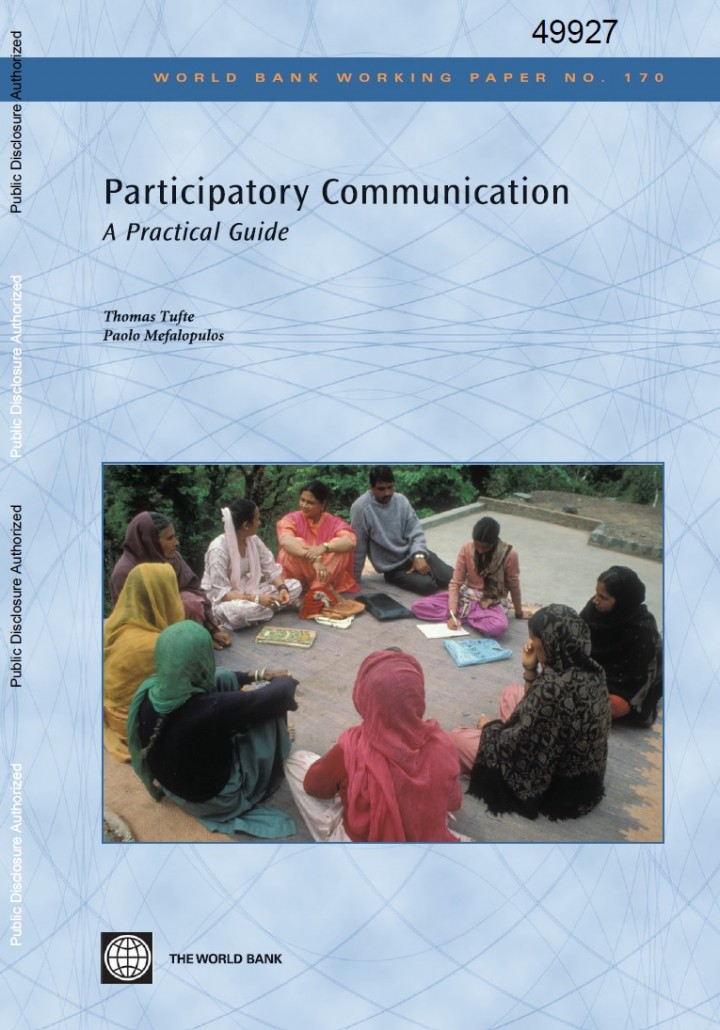Participatory Communication. A Practical Guide - World Bank Working Paper No. 170
Tufte, T., Mefalopulos, P. (2009)

Published in: 2009
Pages: 62
Publisher:
The World Bank
Author:
Tufte, T., Mefalopulos, P.
Uploaded by:
SuSanA Admin
Partner profile:
common upload
938 Views
13 Downloads
Many communication practitioners and development workers face obstacles and challenges in their practical work. A participatory communication strategy offers a very specific perspective on how to articulate social processes, decision-making processes, and any change process for that matter. Participatory approaches are nothing new. However, what is new is the proliferation of institutions, especially governmental but also nongovernmental organizations (NGOs) that seek participatory approaches in their development initiative. This guide concerns to provide perspectives, tools and experiences regarding how to go about it with participatory communication strategies. It is conceived as a guide to be of relevance and utility for development workers in the field. It is targeted at both at government and their officials, the World Bank staff, and at civil society. The particular relevance of this guide is three-fold: 1) placing the practitioner debate about participatory communication within a conceptual framework, allowing the practitioner who reads this to position him or herself conceptually, understanding some of the possible implications of opting for one or another strategic approach in their use of communication; 2) providing an introduction to the use of a participatory communication approach to specific development projects as well as illustrating the use of participatory communication in broader social change processes; and 3) drawing generic lessons learned from the experiences with participatory communication.
Bibliographic information
Tufte, T., Mefalopulos, P. (2009). Participatory Communication. A Practical Guide - World Bank Working Paper No. 170. The World Bank
Filter tags
English Guidelines and manuals















